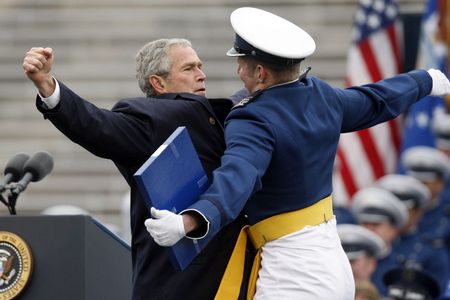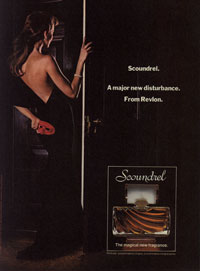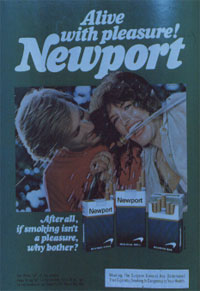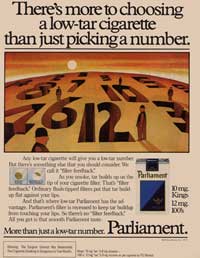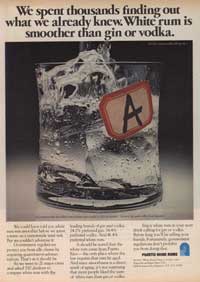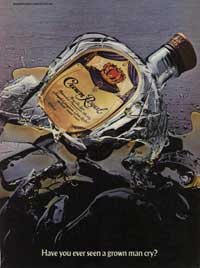
Saturday, January 3, 2009
Since 1949?
Play Video Video: Economic Outlook CNBC Play Video Economy Video: Be cautious before refinancing your mortgage even though interest rates are low WHAS TV11 Louisville Related Quotes Symbol Price Change
BMY 23.88 +0.63
GM 3.65 +0.45
PPC 0.00 0.00
VC 0.35 0.00
WDC 12.33 +0.88
AP – In this Dec. 23, 2008 file photo, with the last Tahoe already moved off, the final assembly area in the … NEW YORK – Signs grew that the economy could turn even weaker in 2009, as an index of December manufacturing activity sank to its lowest point in 28 years. Every corner of the sector was down, from bakeries to cigarette-makers to aluminum smelters.
The Institute for Supply Management, a trade group of purchasing executives, said Friday its manufacturing index fell to 32.4 in December, a greater-than-expected decline from November's reading of 36.2. Wall Street economists surveyed by Thomson Reuters had expected the reading to fall to 35.5.
Components of the index hit historic lows. New orders fell to their lowest level on records going back to 1948. Prices fell as the number of respondents saying they had paid more in December than in November sank to its lowest monthly reading since 1949.
Read more here [Link]
Friday, January 2, 2009
Canon
8 entries found.
1canon (noun)
2canon (noun)
cañon
1cannon (noun)
canyon
canon law
canon lawyer
canon regular
Sponsored LinksCanon' at Amazon
Massive selection and low prices. Free Shipping on Qualified Orders!
Amazon.com/electronics
Main Entry: 1can·on
Pronunciation: \ˈka-nən\
Function: noun
Etymology: Middle English, from Old English, from Late Latin, from Latin, ruler, rule, model, standard, from Greek kanōn
Date: before 12th century
1 a: a regulation or dogma decreed by a church council b: a provision of canon law
2 [Middle English, from Anglo-French, from Late Latin, from Latin, model] : the most solemn and unvarying part of the Mass including the consecration of the bread and wine
3 [Middle English, from Late Latin, from Latin, standard] a: an authoritative list of books accepted as Holy Scripture b: the authentic works of a writer c: a sanctioned or accepted group or body of related works
4 a: an accepted principle or rule b: a criterion or standard of judgment c: a body of principles, rules, standards, or norms
5 [Late Greek kanōn, from Greek, model] : a contrapuntal musical composition in which each successively entering voice presents the initial theme usually transformed in a strictly consistent way
synonyms see law
Thursday, January 1, 2009
More Strut!
(Sorry, sound quality sucks.)
My Babe Margo...
The Cowboy Junkies!
Sorry but the vid is kinda lame. Good vid is [here] but jerk that uploaded it won't allow embedding and they aint allowin me to upload here anymore from my files for some reason. Personally I have no clue as to why the tard "totallycooltv" would deny embedding option, unless except he needs the attention
1968
I remember laughing because the blonde guy sang so funny. He perked his head up an screamed "Baybeee, please, please!!!!"
Sorry but this is not that version, close enough anyway.
American Traditional Post
1971, ten years old I go to my grandmothers house. Looking through her piano music I find Led Zeppelins song Gallows Pole (I knew Granmaw was a hippie anyway but this confirmed my suspicions about her), she made some kind of lame excuse about it being American Traditional Folk music... Bull-Puck! That woman Rocked and I knew it!
Lord Bless You Grandmaw. I still Love you.
My favorite version. I was only 3 years old but remember it like it was yesterday...
Dolly Parton Post
The Ronnie Prophet Show 1975
I almost met Dolly Parton once at the Emancipation Day Festival at Roger Williams Park back In 88 or 89. LOL, I couldn't thing of a single thing to say and she was walkin right behind me so instead I spun around an dropped to one knee and started whistling "Hello Dolly"
She gave me big smile :-)
Louis Armstrong....
10,000 years fighting
I really do cry
Nothing can change it but it hurts to see it.
So many lives, so much wasted, So much pain.
Just little children too..
I do cry
.
Wednesday, December 31, 2008
Instant Chocolate Cake!
Method:
1 Coffee Mug
4 tablespoons flour(that's plain flour, not self-rising)
4 tablespoons sugar
2 tablespoons baking cocoa
1 egg
3 tablespoons milk
3 tablespoons oil
3 tablespoons chocolate chips (optional)
Small splash of vanilla
Add dry ingredients to mug, and mix well . Add the egg and mix thoroughly.
Pour in the milk and oil and mix well.
Add the chocolate chips (if using) and vanilla, and mix again.
Put your mug in the microwave and cook for 3 minutes at 1000 watts. The cake will rise over the top of the mug, but don't be alarmed!
Allow to cool a little, and tip out onto a plate if desired.
EAT! (this can serve 2 if you want to share!)
And why is this the most dangerous cake recipe in the world? Because now we are all only 5 minutes away from chocolate cake at any time of the day or night
How to make a broom

More from Mother Earth News
How to Make a Broom
An expert broom maker explains the basic steps to making a functional and attractive broom.
 | With a few simple tools and materials, you can make your own brooms. ISTOCKPHOTO/JOSEPH NUGENT |
You can make your own brooms! If you have a green thumb, you can start by growing your own broomcorn. But even if you can't grow broomcorn, you can order it from a supplier (see Resources at the end of this article). Photos for each step of the broom-making process are available in the Image Gallery; see link above.
RELATED ARTICLES
Whittle a Birch Broom
A penknife, birch sapling and a little patience are all you need....
MOTHER'S BI-MONTHLY ALMANAC
To Remove Tight Canister Covers; Drill a Clean Holes; Hacksaw a Skimmin' Spoon; Good Add-Vice; De-S...
Country Lore: Homemade Sausage How-to
Making sausage at home from ground elk meat, venison or pork is simple. You can create recipes that...
Last Laugh
Last Laugh December/January 1996 Man Straight Jacketed After Attempting to Detonate Stick of Dynami...
Broomcorn
One of the most common questions I hear when I am demonstrating my craft is, “What plant material is used for the broom bristles?” The material is called broomcorn (Sorghum bicolor). This plant is closely related to sweet sorghum (Sorghum vulgare), which is the plant used to produce sorghum molasses. Broomcorn is an annual and, from a distance, looks like sweet corn in the field. Yet, upon close examination, there are no cobs, just a large tassel on the top. That tassel is the part of the plant used for making brooms. Other materials can be used for the sweeper of a broom, but we're focusing on traditional corn brooms.
To make a hearth broom, 28 heads of broomcorn are used for the inside layer of bristles and 17 heads for the outside layer. Each head is measured with a cubit (the distance between your elbow to your longest finger). Put the knuckle of the corn, the place where the head meets the stalk, at your elbow. If the bristles, or brush, are past the tip of your fingers, that stalk is a keeper. If the material is too short, it will be used for a whisk broom later.
The broomcorn is prepared by cutting the stalks differently for each layer. Stalks are trimmed just past the knuckle on the stalk side for inside layers, but left longer for outside layers so they can be plaited. Place the broomcorn in a bucket of hot water with the cut ends submerged. The corn needs to soak for a minimum of 15 minutes.
Assemble the following materials before you sit down to make a broom:
- Broomcorn (about 2-3 pounds per broom)
- #18 nylon cord (for tying)
- Hemp string for sewing (20 lb. test)
- Wooden handle (18 inches)
Tools
- foot held apparatus (for holding cord taut)
- scissors
- knife
- large needle
- sewing clamp
- lighter
- drill
The Handle
While the broomcorn is soaking, you can prepare the broom handle. I prefer the rustic look and use a stick with the bark still on it. (Commercial dowel handles can be ordered from a supplier.) When I collect handles, I cut them to length (18 inches for a hearth broom), and they dry for at least six months. If any shrinkage, cracking or bark peeling occurs while drying, reject those sticks. Sharpen the tip with a hatchet or knife and drill an eighth-inch hole just above the taper. That hole is for tying the string onto the handle.
Ian Hunter
(the Gem)
Mick Ronson...
One of the greatest guitarists of all time.
He rated (I think) #64 on Rolling Stone Magazines poll and now he's dead.
Here is his info page on Wiki [Link]
Don't nobody be tellin him but they got a warrant out for his arrest from Bradlee's Department Store in Swansea back in 1978.
LOL, I got busted stealin his 8-Track tape and needed a name to use to make bail. I used his, figured it was 1/2 his fault I tried to steal it anyway.
"Respect the man in the ice cream van"
Laters all.....
Wild nights...
"I hate Bon Bunny"
LOL, none of this is music, still yer watchin it dumbass, huh?
Here's the real gig Kid!
You dumbass, you listened to me too long.... pfffht!
Tuesday, December 30, 2008
Sex and Death!
Subliminal Messages in Advertising
(jump to the ads)
You'll probably find the ideas and analysis in this section controversial. The thought of subliminal manipulation frequently excites passionate reaction. Some embrace these ideas immediately, others react with horror and disgust. I hope you won't accept or reject anything blindly. I only ask that you consider rationally what you'll see and read. If you feel the desire to reject something out of hand, resist doing so. Instead, generate as many alternate explanations as you can (working in small groups makes this much easier), then test each logically and rationally to determine which best fits the facts. Remember that advertisers spent tens of thousands of 1970s dollars to create each ad I've included below, then hundreds of thousands or millions more to place them where they'd be seen. You also need to remember that if subliminal messages were in fact included in these ads, they were most likely intentionally hidden from conscious perception. (It is conceivable that in the case of some symbolic subliminals, the creators acted unconsciously.) If the theory is correct, for them to work, it is necessary that our subconscious minds "see" them while consciously we ignore them.
On the whole, advertising may be the most carefully constructed of all human communication; it is certainly the most expensive. The press likes to comment on the cost of motion picture and television production, but common sense (as well as research) tells us that advertising costs more to produce. After all, in our culture it supports entertainment production and presentation. Second for second, the cost to produce an ad is more than that to produce a feature film or TV show. Therefore, it shouldn't be surprising when we find that more care (and consequently more cost) is devoted to the minute details in an ad than to those in either a TV episode or a feature film.
Like most people, advertisers sometimes like to discuss their work. Reading the descriptions some have given of how particular ads and campaigns were created (caveat: before using this article with your students, review it for age-appropriate language and ideas - a good idea in general, but especially for links in this section of the site), we see that every component of an ad is carefully constructed and placed, sometimes deceptively so. So before automatically rejecting a subliminal explanation for the presence of something, try to find a better one to explain its appearance.
I've titled this section Sex and Death Among the Ice Cubes because it is based in large part on my reading of the work of Wilson Bryan Key. While I do not believe that attempts at subliminal manipulation are as common as Key asserts, I find the contents of a small number of ads impossible to explain reasonably in any other way.
Key singles out ice cubes because, as something most of us rarely attend to consciously, they make perfect objects for subliminal tinkering. As a psychologist, researcher and former advertiser, Key knew that photographers take large numbers of photos in order to give ad agencies and producers the selections they need to get just what they want in a particular ad. Doing this takes time. Since ice melts over time, especially under the heat generated by the lamps used to light photographers' sets, advertisers prefer to use substitutes of one sort or another. Thus, what appears to be ice in an ad is either some sort of plastic prop, or is artistically added to the photograph (or enhanced in it) after the shutter snaps.
Sex and Death are topics of universal human interest. In western culture they are also taboo. I'm certain that many of you will think about contemporary entertainment, then question my sanity for choosing to write the last sentence. Nonetheless, I stand by it. The gratuitous sex and violence on display in print, film and television correlates to human experience almost as much as the appearance of models in ads correlates to the appearance of the average man or woman on the street; which is to say close to zero. We are usually encouraged to repress our questions and fears about both sex and death, often to the detriment of our mental health and personal relationships. Key asserts that advertisers know this, and use it to manipulate us subconsciously.
Here is how I summarize the argument Key makes in his books. Please be aware that I do not have the educational or vocational background to either refute or support it. I find it useful in understanding the ads linked below because I can explain what I see in them in no other way.
- Human minds instantaneously perceive all information transmitted through our senses (sight, smell, touch, hearing and taste).
- The conscious mind filters out those things with which it is unable to deal (either psychologically or because of the sheer volume of sensory experience), and constructs an acceptable and meaningful mental image from those stimuli made conscious.
- The remaining sensory inputs are stored (at least for a time) in the unconscious, where they can effect conscious behavior.
- Advertisers have found that subliminal messages in advertising can motivate purchases.
- Ads are designed to transmit their information in a fraction of a second (i.e. the time it takes to turn a page). If an individual stops to read an ad, that is a plus.
- Advertisers realize that any given ad will only motivate a small percentage of people exposed to it to make a purchase, so ads are targeted at audiences most likely to be receptive to their messages. Thus we have a market research industry. If an ad can bring in $20 in sales for each dollar it costs, it is considered to have broken even.
- Beyond marketing effects, advertisers have not explored the effects of subliminal messages. Furthermore, they do not know how or why they work.
- Research along these lines may have been done in the private sector; but, if so, it is considered proprietary and has been kept secret or destroyed. Indeed, the federal government may also have commissioned such research in connection with the use of subliminal embeds on currency. If so, that has also been suppressed.
- Public (i.e. university) research in these areas is almost non-existent as funding has been nearly impossible to secure.
- Key posits that subliminal ads work by connecting repressed needs and fears with a product. When the unconscious feels the need or fear, the conscious perceives the need for the product, or becomes aware of the product. Since Americans (indeed most of those from western culture) are taught from infancy to repress questions and thoughts about sex and death, they make the best subjects for subliminal ad messages. While invisible to the vast majority of Americans (and others from western cultures), people from cultures that deal openly with sex and death have no trouble seeing such messages.
- By playing on people's repressed fears and needs, subliminal advertising may be a contributing factor to many personal and social problems - drug abuse, suicide, insanity, unmarried pregnancy, VD, the breakup of the family, violent crime, etc.
- Key reports showing an ad containing subliminal castration imagery to a group of college students. He claims that a high percentage of the men reported feeling fear after viewing it, without knowing why. Women had no such reaction.
- Subliminal techniques are used in all media.
- Print ads are the easiest to study.
- Broadcast subliminals are impossible to locate without sophisticated equipment (remember that Key wrote in the 1970s, the necessary equipment may now be cheaper and more common). Indeed, since the techniques are constantly changing, it is often difficult to know what to look for even if one has the proper equipment.
If they are present, subliminal messages in ads are either symbolic (plainly visible, but with a meaning that producers believe from testing and research will be psychologically repressed by the target audience) or embedded (hidden from conscious perception artistically). Embeds are the most controversial, the most expensive to create (requiring expensive talent and technology), and (from my observation) the least common.
If you choose to use one or more of these ads with your students, you might want to make copies for distribution (clicking an ad image on any analysis page I've created will open that image in a separate browser window from which you can use your browser's print command to print it). If you want, begin by adapting the activity outlined in What's Wrong with this Picture?, substituting one of the ads below for the album cover image. Use it as an introduction before presenting anything about subliminal techniques or theory. You can then proceed to use additional ads where you'll ask your students to complete a blank analysis questionaire prior to a group discussion.
Click on an image to open the page containing the analysis I have prepared for it.
Before clicking, try to identify one or more messages on your own. The process that works best for me is to not focus on searching, but to let my mind go blank while looking at the image. After a few moments, something often "jumps out". I assume that by actively searching for meaning, my conscious mind is working to block whatever I've learned to repress. Looking without seeking allows otherwise subconscious thoughts to find a way into consciousness. I've used these ads in slide presentations to many groups over the years (secondary classes, teacher conferences and in-service days, etc.), and I can remember no one being able to identify a subliminal until after I'd gone through an example and explained this process. I will say that once people see them, they don't forget them, unless of course they are among the group that finds this all a bunch of hogwash.
All of these ads ran in magazines in the late 1970s and early 1980s. Where I noted the source at the time I clipped an ad, I have provided it below.









